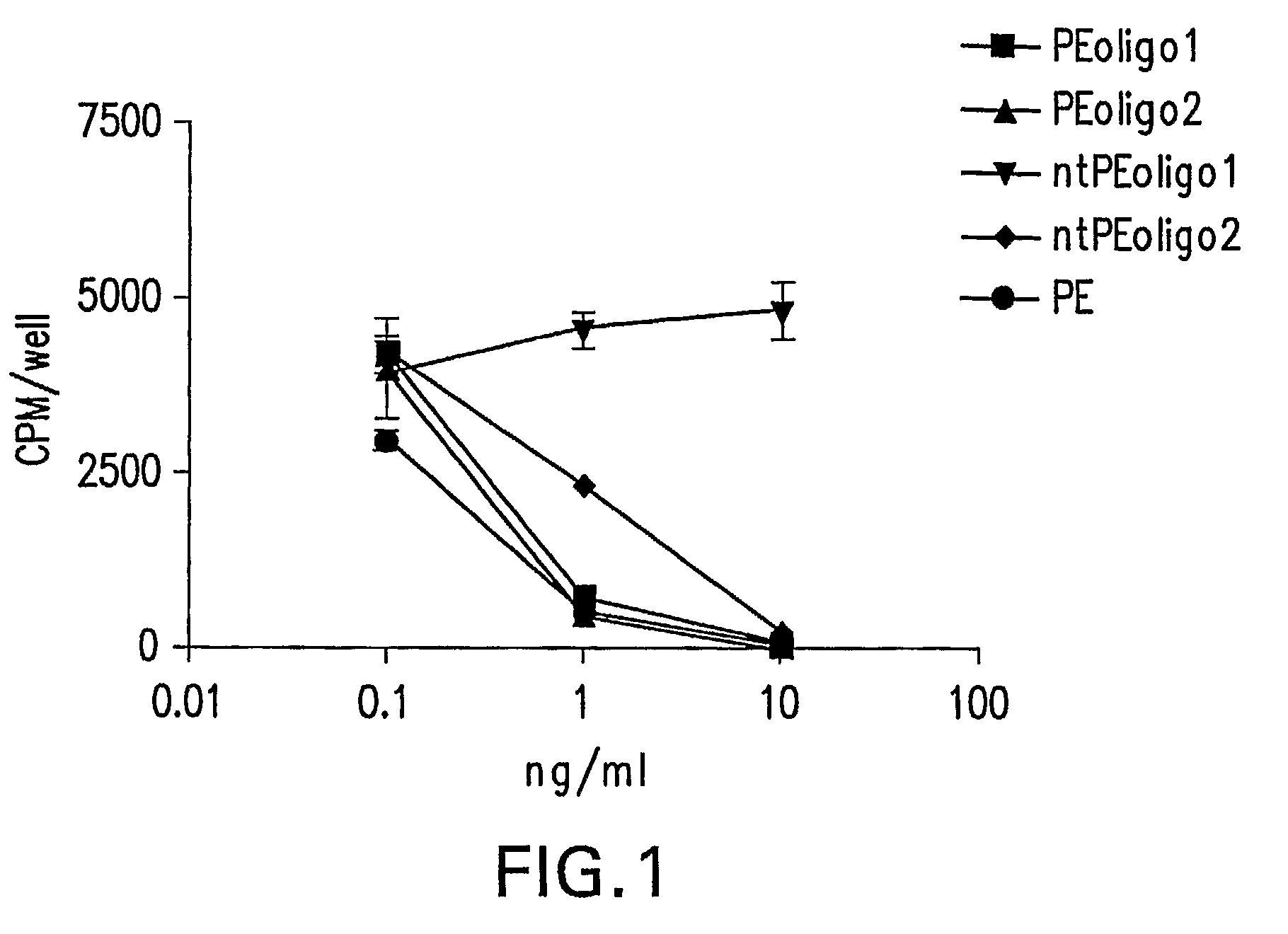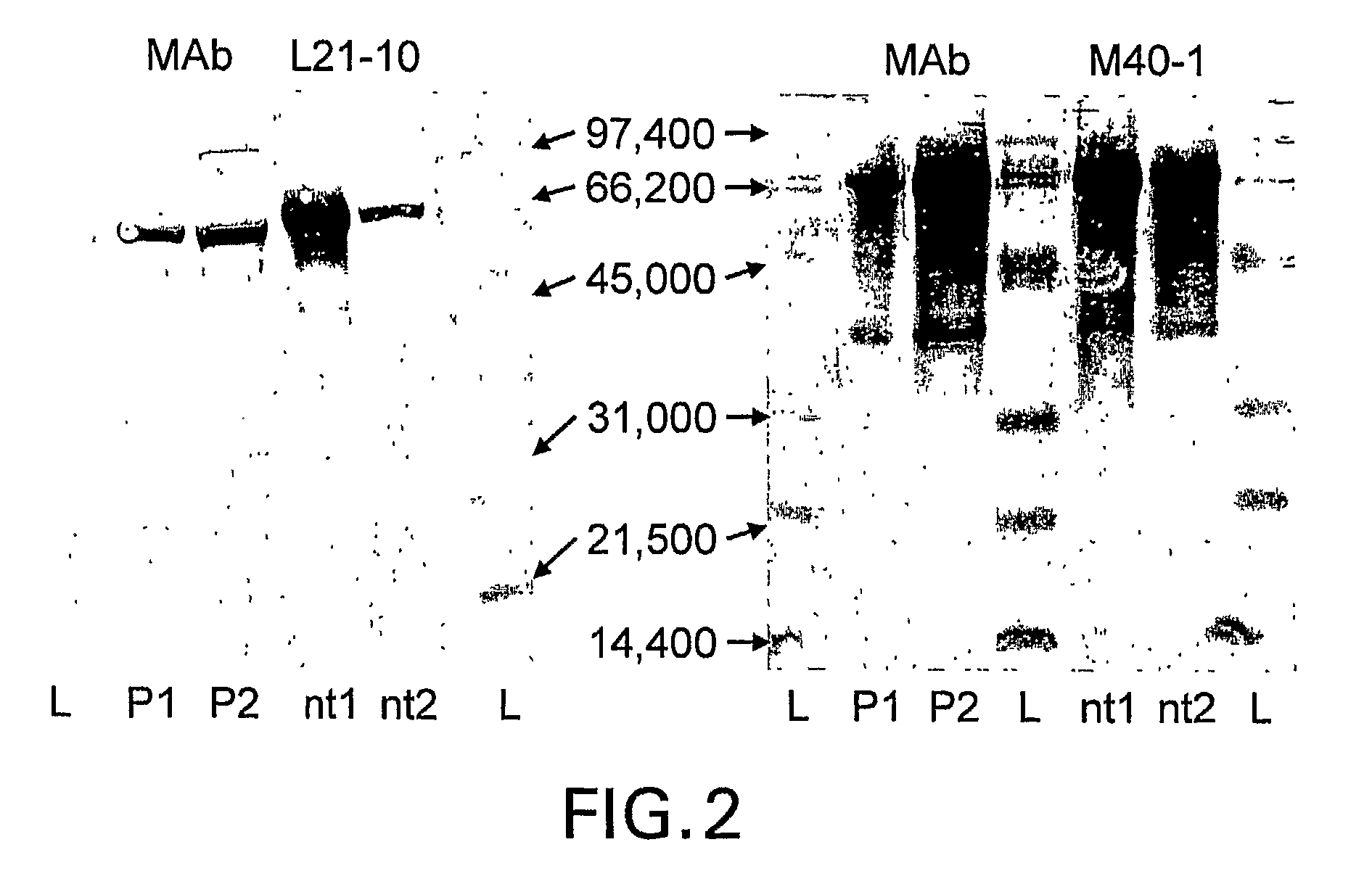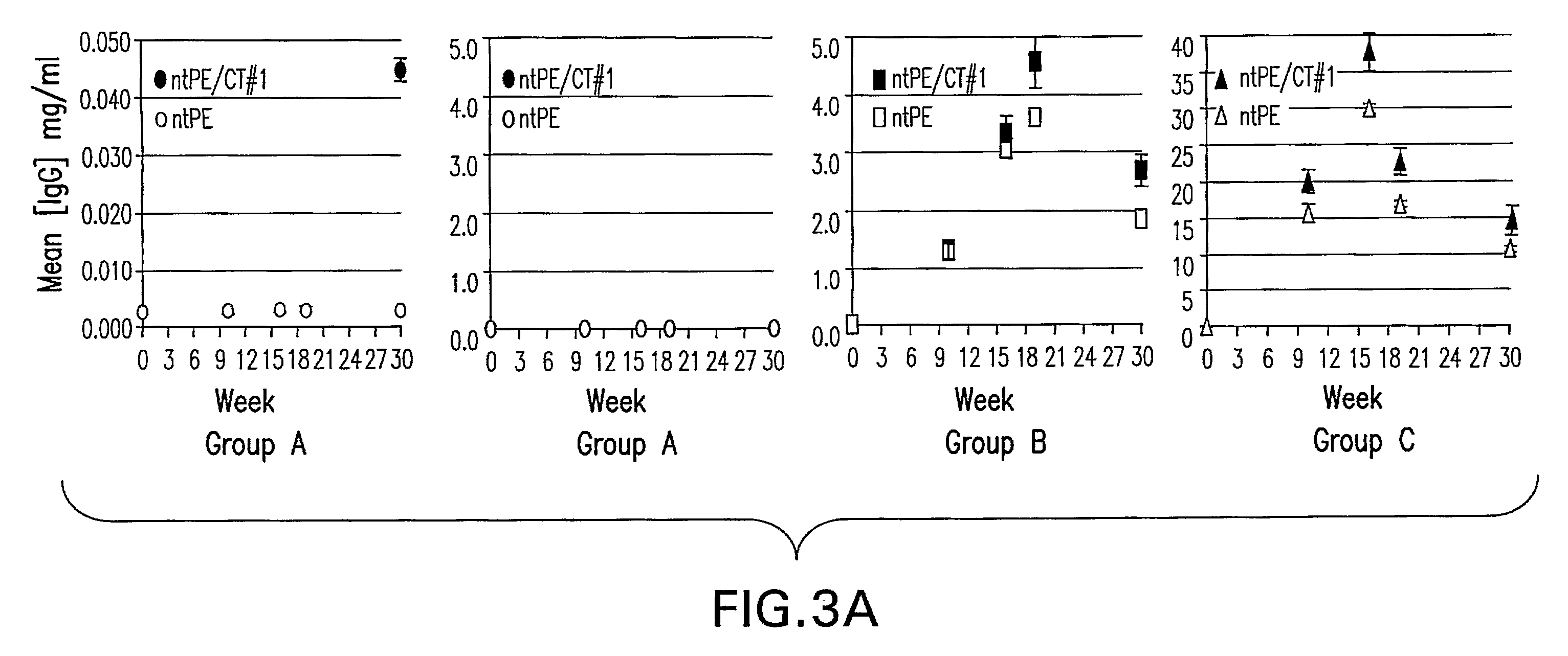Methods and compositions for immunizing against Chlamydia infection
a technology of chlamydia trachomatis and compositions, applied in the field of compositions for immunization against infection by chlamydia trachomatis, can solve the problems of significant public health problems, no vaccine presently approved for immunization against i>c. trachomatis , the ineffective approach to immunize against infection, so as to reduce or prevent, reduce or prevent
- Summary
- Abstract
- Description
- Claims
- Application Information
AI Technical Summary
Benefits of technology
Problems solved by technology
Method used
Image
Examples
Embodiment Construction
6.1. Definitions
[0037]Unless defined otherwise, all technical and scientific terms used herein have the meaning commonly understood by a person skilled in the art to which this invention belongs. As used herein, the following terms have the meanings ascribed to them unless specified otherwise.
[0038]A “ligand” is a compound that specifically binds to a target molecule. Exemplary ligands include, but are not limited to, an antibody, a cytokine, a substrate, a signaling molecule, and the like.
[0039]A “receptor” is compound that specifically binds to a ligand.
[0040]A ligand or a receptor (e.g., an antibody) “specifically binds to” or “is specifically immunoreactive with” another molecule when the ligand or receptor functions in a binding reaction that indicates the presence of the molecule in a sample of heterogeneous compounds. Thus, under designated assay (e.g., immunoassay) conditions, the ligand or receptor binds preferentially to a particular compound and does not bind in a signifi...
PUM
| Property | Measurement | Unit |
|---|---|---|
| Tm | aaaaa | aaaaa |
| pH | aaaaa | aaaaa |
| volumes | aaaaa | aaaaa |
Abstract
Description
Claims
Application Information
 Login to View More
Login to View More - R&D
- Intellectual Property
- Life Sciences
- Materials
- Tech Scout
- Unparalleled Data Quality
- Higher Quality Content
- 60% Fewer Hallucinations
Browse by: Latest US Patents, China's latest patents, Technical Efficacy Thesaurus, Application Domain, Technology Topic, Popular Technical Reports.
© 2025 PatSnap. All rights reserved.Legal|Privacy policy|Modern Slavery Act Transparency Statement|Sitemap|About US| Contact US: help@patsnap.com



